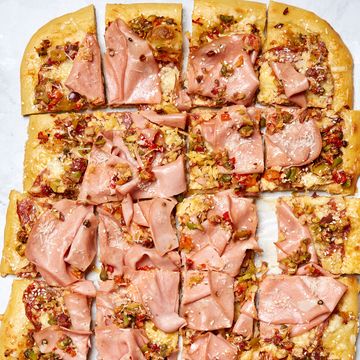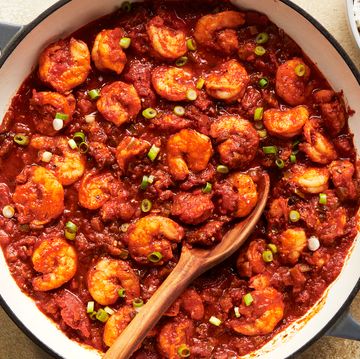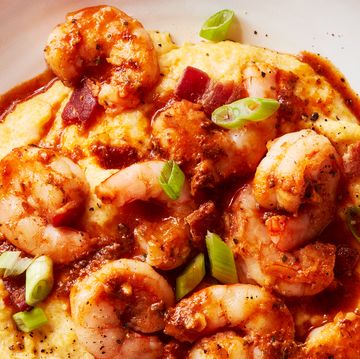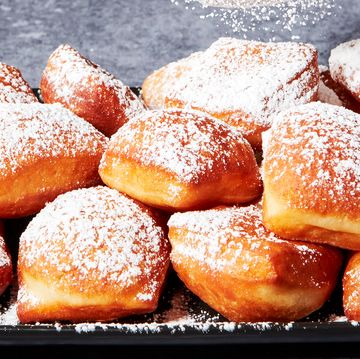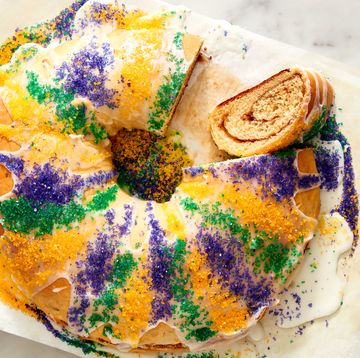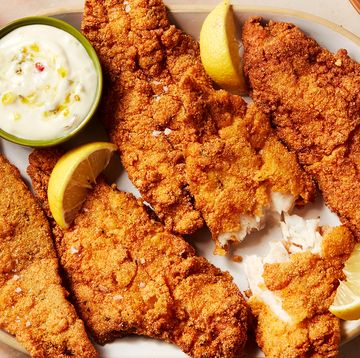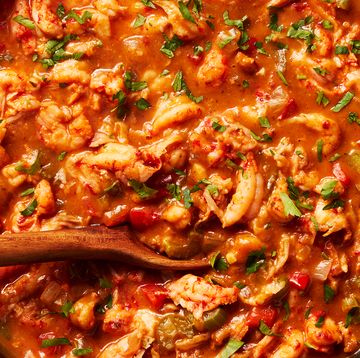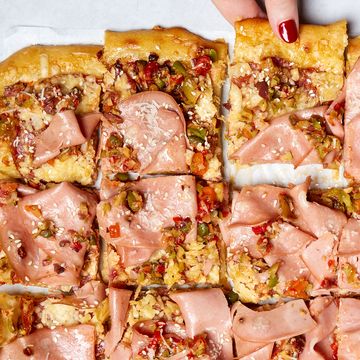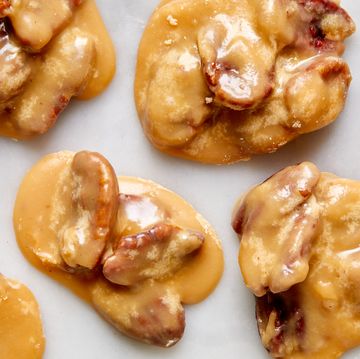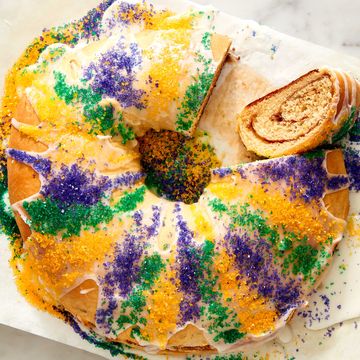What do Rosca de Reyes, Galette des Rois, Bolo Rei, Banitsa, and Vasilopita all have in common? They are all king cakes, the official sweet of Mardi Gras. The name Mardi Gras means Fat Tuesday in French, and it's the day of sanctioned indulgence before the austere Catholic season of Lent. King cakes are served throughout the Carnival season as part of the indulgences, and each country has its own version.
Traditionally, all king cakes have a trinket; a tiny plastic, ceramic, or porcelain doll; or a bean used to represent baby Jesus hidden somewhere inside the cake. But different cultures practice distinct customs for the person who finds the prize, which range from being crowned royalty for the day to being tapped as the person to bring the cake for the next celebration!
Get a taste of the different king cakes served around the world:
Louisiana: King Cake
In New Orleans, King Cake is a sweet, bready ring, almost like a big Danish roll or cinnamon roll. It's sprinkled with sugar in the Mardi Gras colors of purple (for justice), green (faith), and gold (power) and drizzled with a nice layer of icing.
More From Delish: Party Fuel: 10 International Carnival Food Traditions
Spain: Tortell de Reis
Within Spain, the tortell varies from region to region, but most prepare a bread-like cake. In Catalonia, the region most famous for the city of Barcelona, theirs is a circular pastry filled with marzipan cream and punctuated with candied fruit like cherries and oranges. It also contains not one, but two prizes. Whoever finds the king figurine gets to wear the crown, while the one who finds the fava bean has the misfortune of paying for the cake!
Mexico: Rosco de Reyes
Most of king cake consumption around Mexico takes place on January 6, Dia de los Reyes (which is Kings Day, or Epiphany) and is actually the day on which they exchange gifts. The ring cake is more oval in shape and topped with candied fruit. Whoever finds the muñeco, or doll, in the cake has to host a party on February 2 for Día de la Candelaria, where it is customary to serve tamales. One food holiday begets another.
More From Delish: Mardi Gras Party for 8
France: Galette de Rois
The French have a thing for pastries, so its no surprise the French king cakes are closer to pastry than cake. King cakes vary across France's regions. In the North, it's the Galette de Rois, a flaky pastry dough filled with frangipane, a combination of pastry cream and almond cream. La Feve, the porcelin figurine, is the prize all the kids vie for. Should they win, they get to don the paper crown.
Portugal: Bolo Rei
This soft, elongated doughy sweet bread is made with raisins and covered with colorful dried and candied fruit and almonds. Though it can no longer come with the traditional metal figurine, the person who finds the fava bean is the one who has to buy next year's cake.
Are you celebrating Fat Tuesday? What's your favorite Mardi Gras food tradition?







